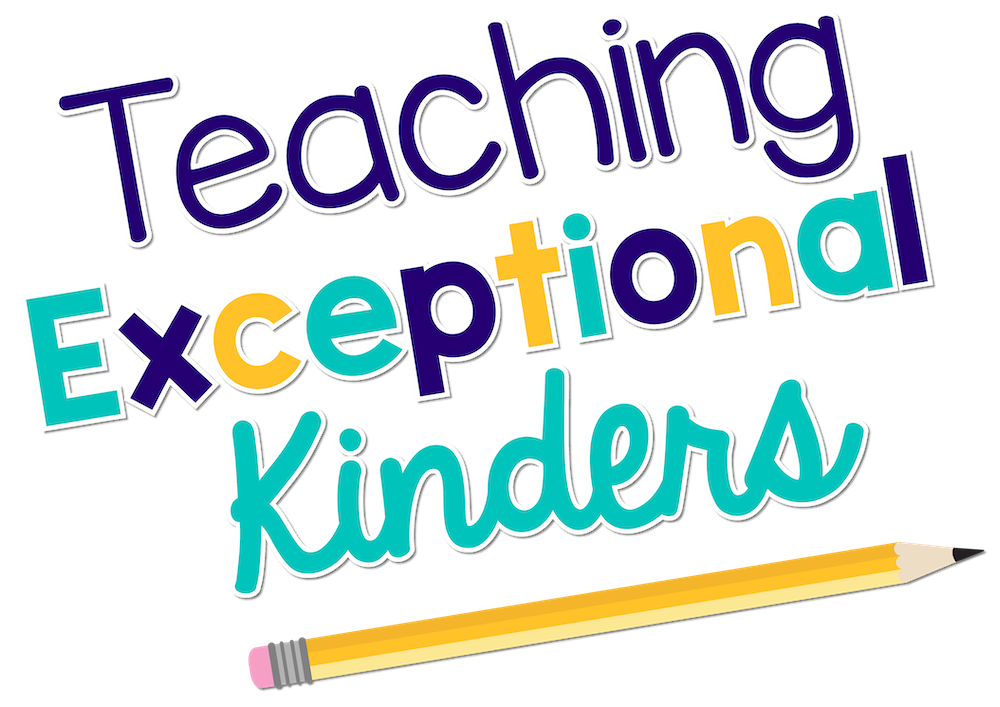Tips for First Year Kindergarten Teachers
Whether you’re a first year teacher or a veteran teacher in a new grade level, stepping into a kindergarten assignment can be daunting. If you’re feeling a little bit overwhelmed as you head into the new year, this is the post for you. I’m sharing my very best tips for first year kindergarten teachers that will help you get your school year started on the right foot!
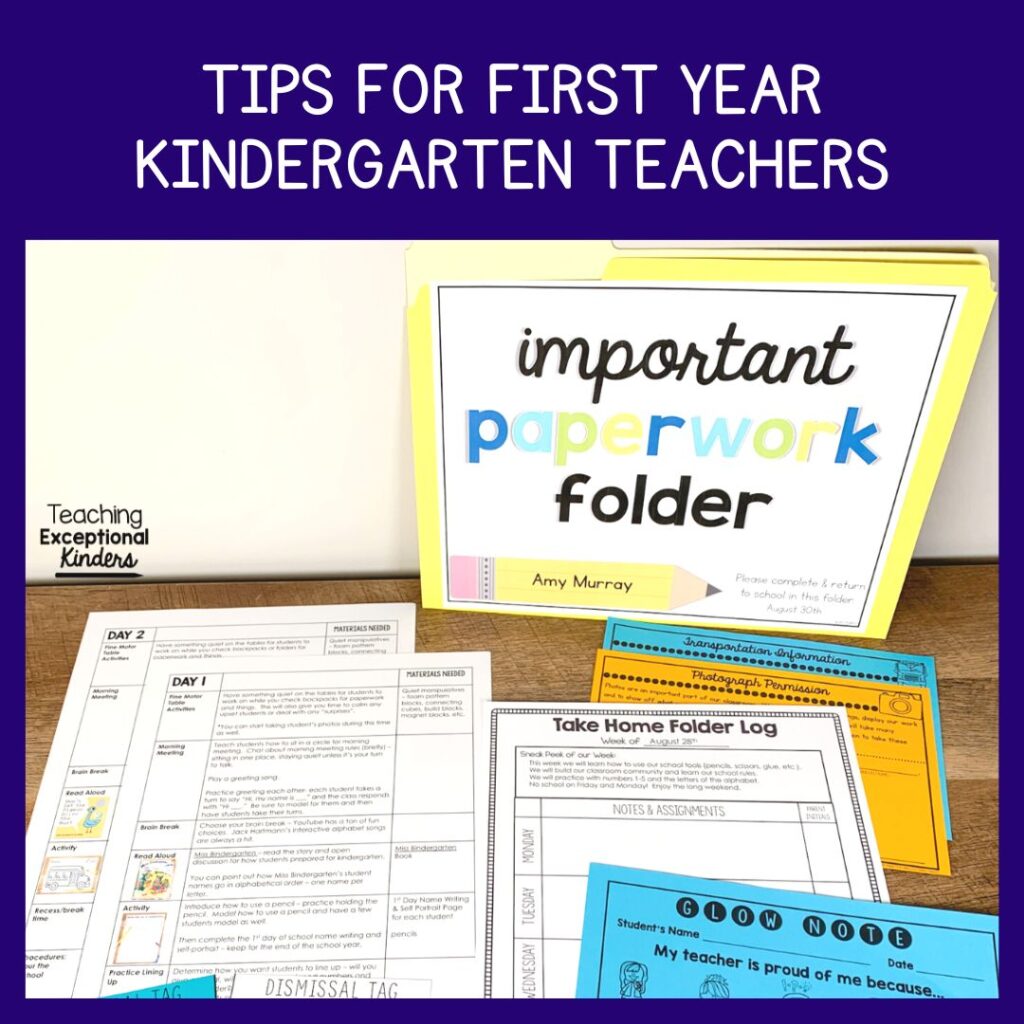
7 Tips for First Year Kindergarten Teachers
1. Gather and Organize Student Information
As nice as it is to have digital student records, the reality is that it is often inconvenient to log in to grab a parent's information for a quick phone call. Or, if your school’s technology has room for improvement, you might find yourself unable to log in during the small window of time you can make a parent contact.
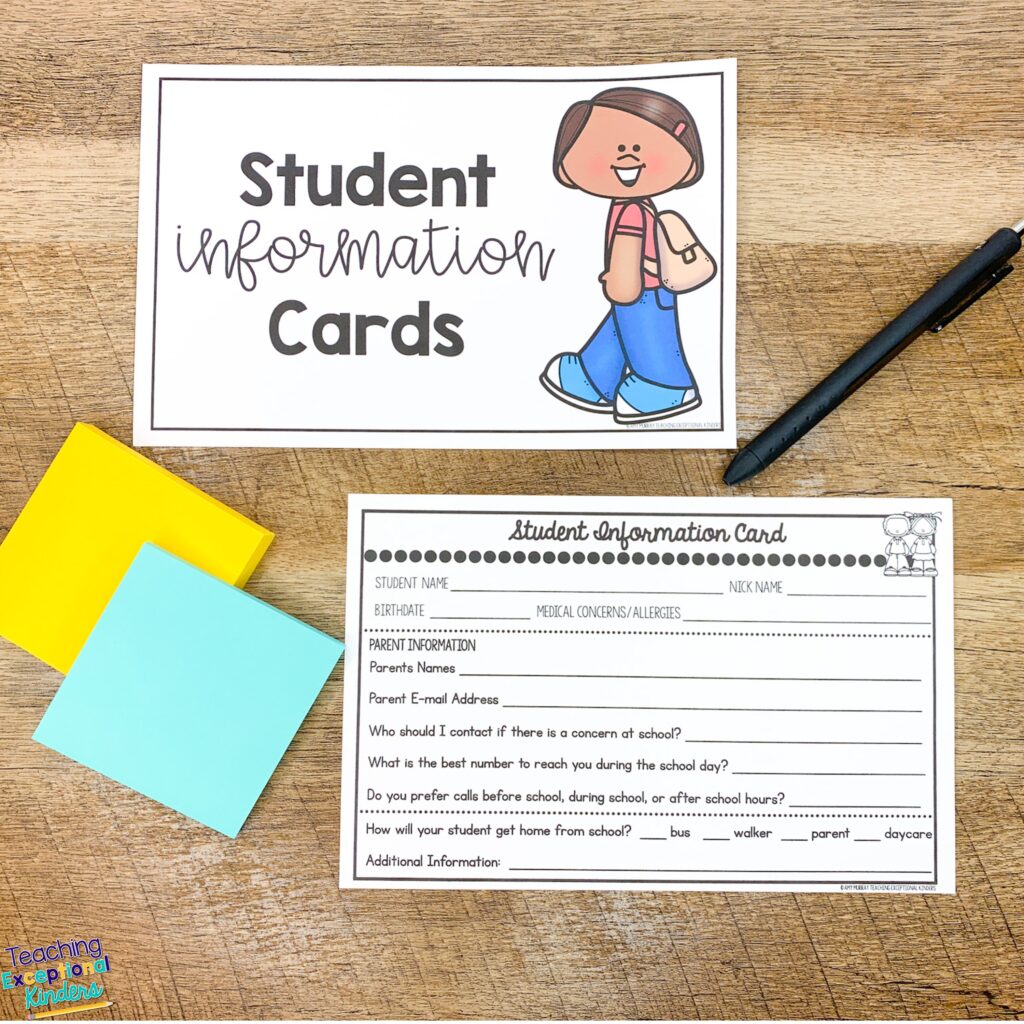
This is why it’s so helpful to gather preferred contact information from parents at the beginning of the year. You can have parents fill out a card-size contact form and then store it on a binder ring near your desk. This makes it easy to locate the phone numbers you need, plus it’s portable if you need to make your phone call in a quieter location.
2. Rethink Classroom Jobs
Traditional classroom jobs make your life way more complicated than it needs to be! Rethink classroom jobs and consider using a daily helper instead.
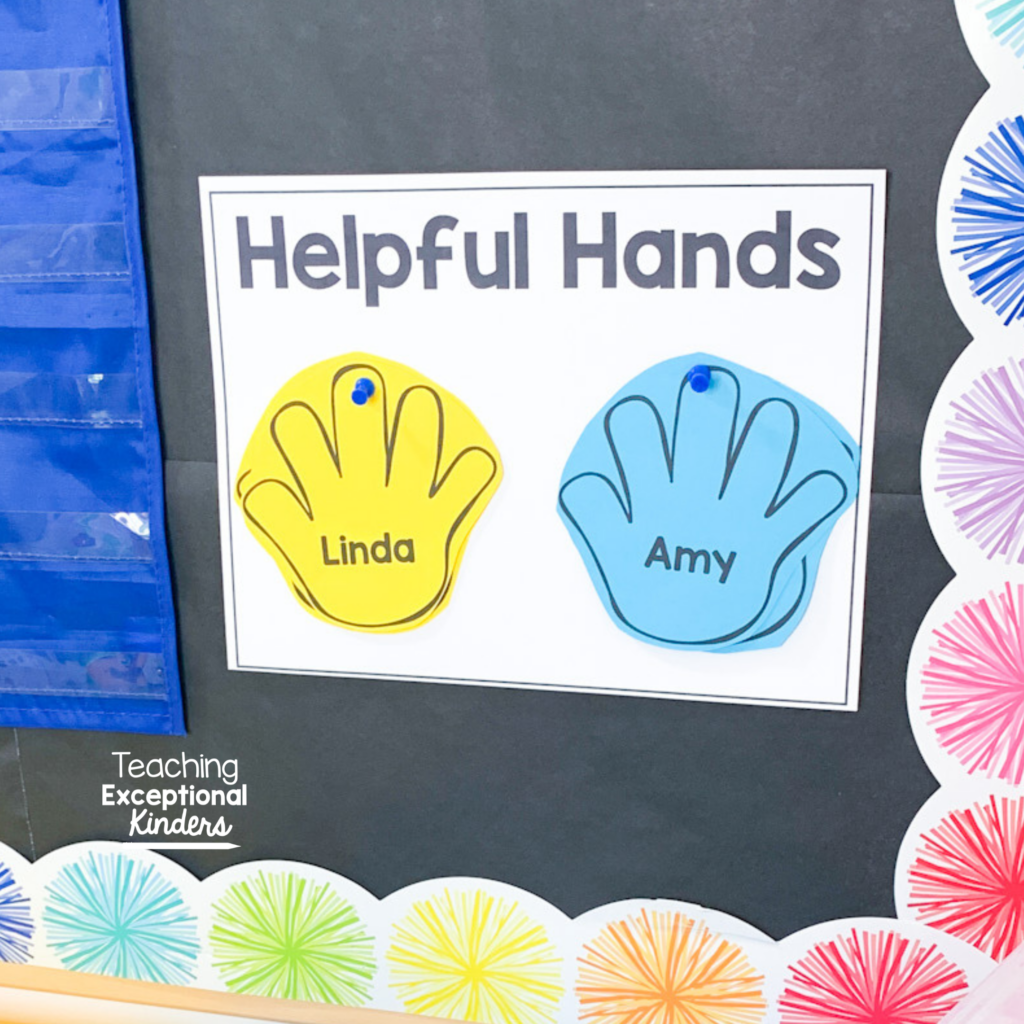
This adjustment will help students learn important skills like responsibility without overcomplicating the daily routine. If this interests you, be sure to check out my blog post about how to set up classroom helpers in kindergarten.
3. Start a Whole-Class Reward System
Another thing that you can do to vastly improve your classroom management is use a whole-class reward system. A simple reward system that focuses on one target behavior at a time is perfect for young kindergarten students.
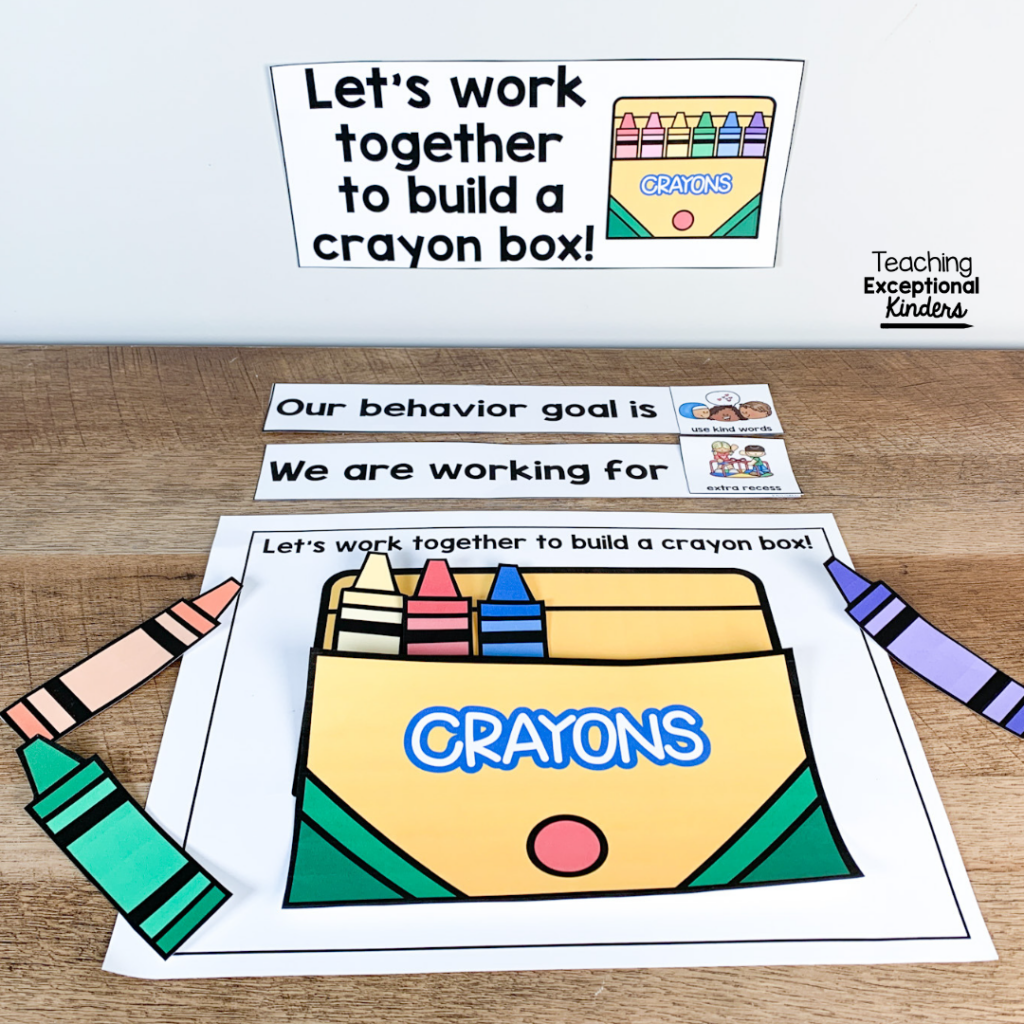
My Build-a-Reward system is a great way to reinforce positive behavior choices. Your students will be eager to help the class earn a piece of the puzzle. Once the puzzle is complete, the class earns the pre-determined reward. Focusing on positive behavior like this can create a supportive classroom environment that will serve your students well all year long.
4. Focus on Relationships
Building relationships with your students and their families is one of the most important things you can do as a kindergarten teacher. No matter what you decide to do for your classroom management, it won’t be nearly as effective if you don’t have strong relationships with your students and their families.
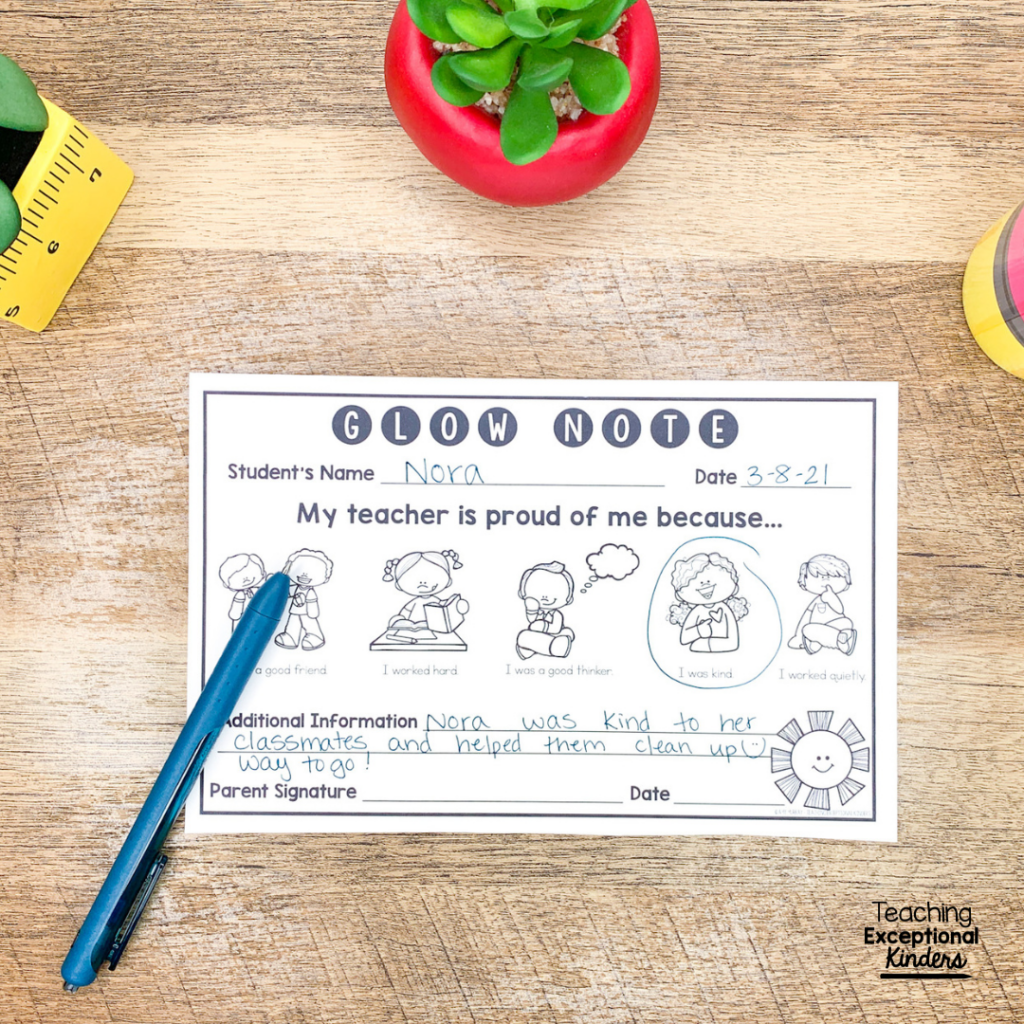
One way that you can do this is by making a positive contact home for each of your students within the first week or so. Opening the lines of communication with positive feedback makes a huge difference in building relationships. After this initial contact, you should continue to consistently send home positive and constructive feedback regarding your students’ behavior. An easy way to do this is with my glow and grow notes! You'll also want to set up a simple routine for communication folders so these notes make it home!
5. Simplify Your First Week Lesson Plans
The first week of kindergarten is definitely unlike any other week school in any other grade level. Many of your students are entering a classroom for the very first time. They are figuring out how to attend to tasks, sit in their seats, use school tools, and follow directions. It’s important that your lesson plans for the first week of school reflect this in the simple activities you choose.
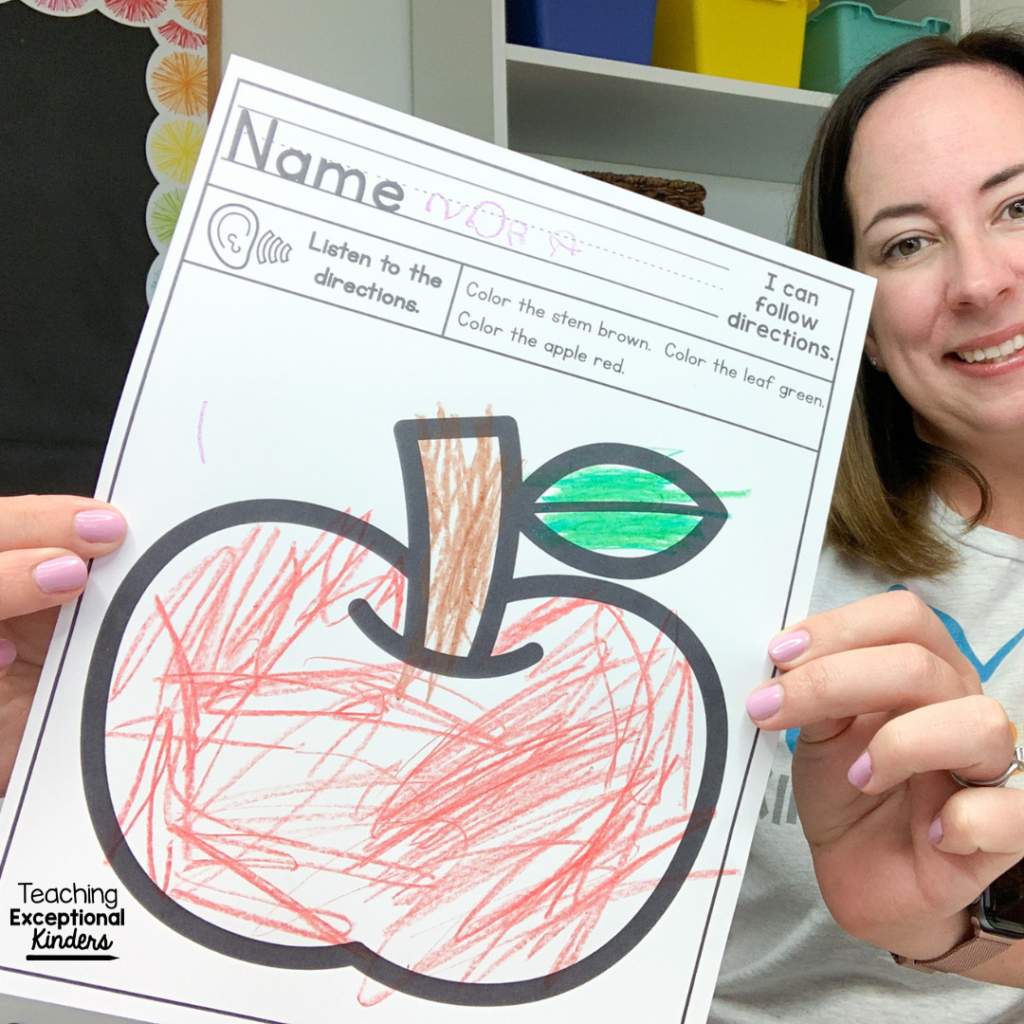
Be sure that your activities for the first week of school include the use of different school supplies. This gives you a chance to see which students are comfortable completing tasks that use tools like scissors and glue. You’ll also be able to identify students who need extra support in order to safely and effectively use their school supplies at the beginning of the year.
6. Explicitly Teach Expectations and Procedures
In addition to using school supplies correctly, there are many other expectations and procedures that kindergarten students need to learn. In a room full of five-year-olds, it’s essential that you explicitly teach these things and don’t just assume that it’s common knowledge.
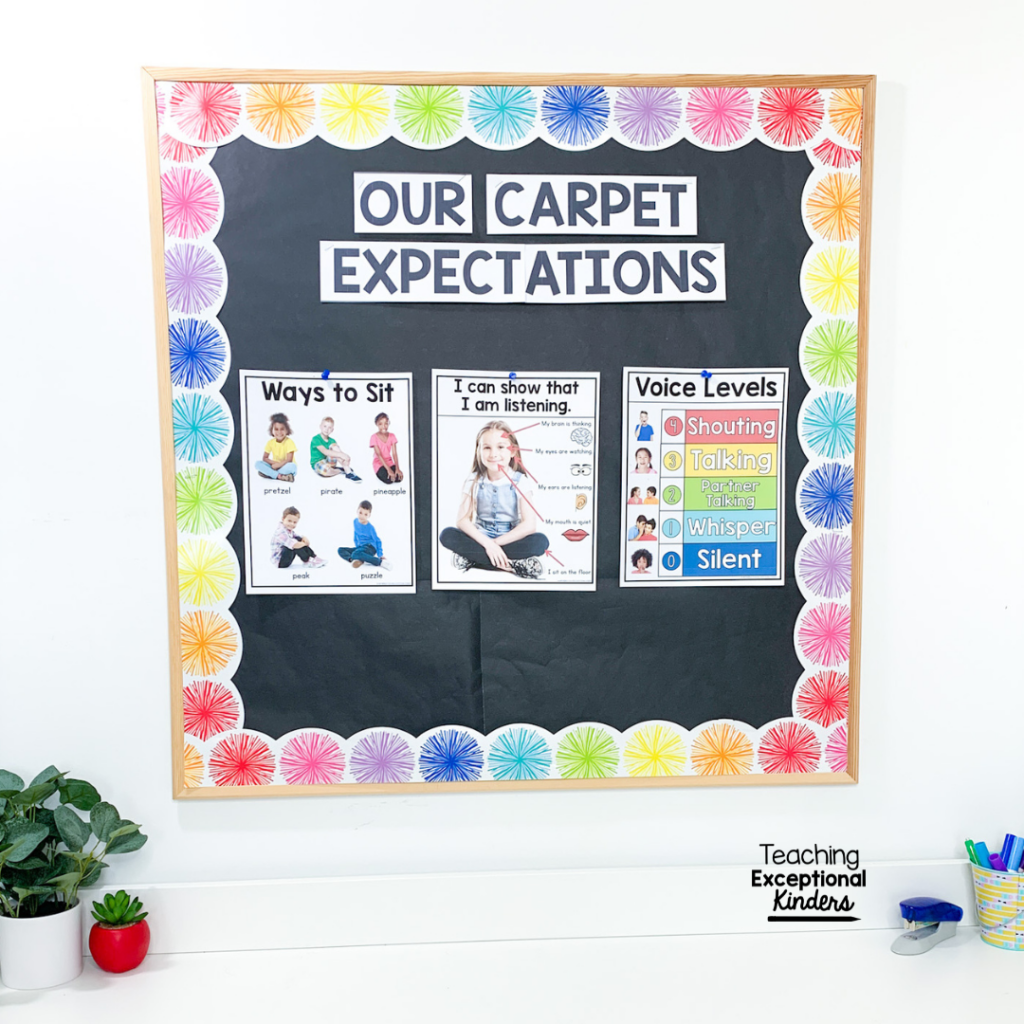
For example, you should take the time to discuss how to sit at the carpet for group instruction. Give students a few choices of ways that they can sit in order to be responsible learners and respectful classmates. Taking the time to do this at the beginning of the year will greatly cut down on interruptions during your instruction to give reminders to your students.
7. Use Plenty of Visual Supports
To cut down on reminders even more, be sure to use plenty of visual supports! There are so many ways that visuals can be used in the kindergarten classroom. For example, if a student isn’t sitting appropriately at the carpet, you could get the student's attention and point to the visual choices of how to sit at the carpet. You'll barely miss a beat in your instruction with a classroom full of visuals that you can reference for student reminders.
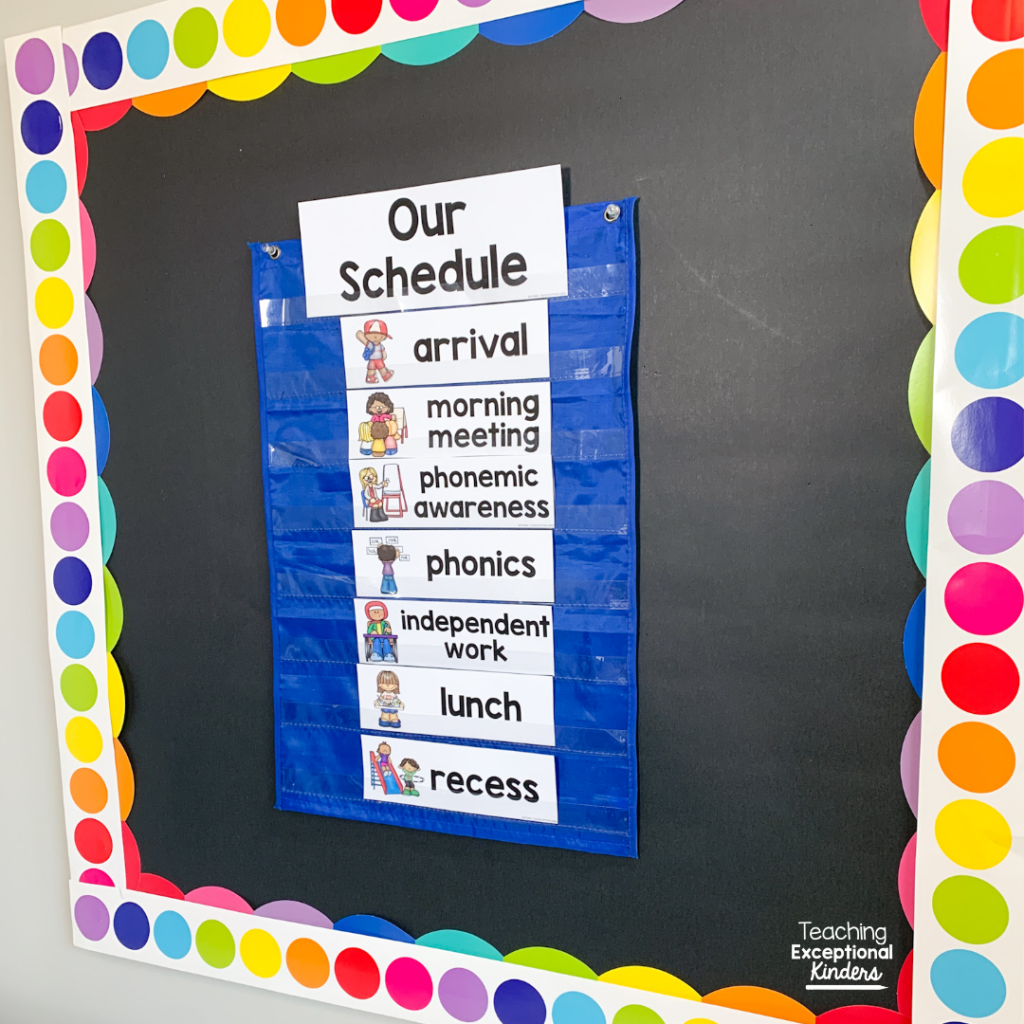
A visual schedule is another lifesaver in the kindergarten classroom, especially at the beginning of the year. It eases anxious feelings when students can see what is coming up next and when they can expect their next break. You can also use visual direction cards to outline multi-step directions and help students become more independent learners.
More Tips for New Kindergarten Teachers
I have a YouTube channel that’s full of tips for kindergarten teachers, especially those who are new to this grade level. Here is a playlist of my favorite tips for the beginning of the year in kindergarten. Be sure to subscribe to my channel so you don’t miss any future content!
Must-Haves for First Year Kindergarten Teachers
Would you like to save some time compiling your classroom management resources, parent communication tools, and visual supports? I have put together a bundle of must-have tools to help kindergarten teachers start their year on the right foot! This even includes sample lesson plans for the first week of school! Head over to the Teaching Exceptional Kinders shop to take a closer look at everything included in this bundle of easy-to-use resources.
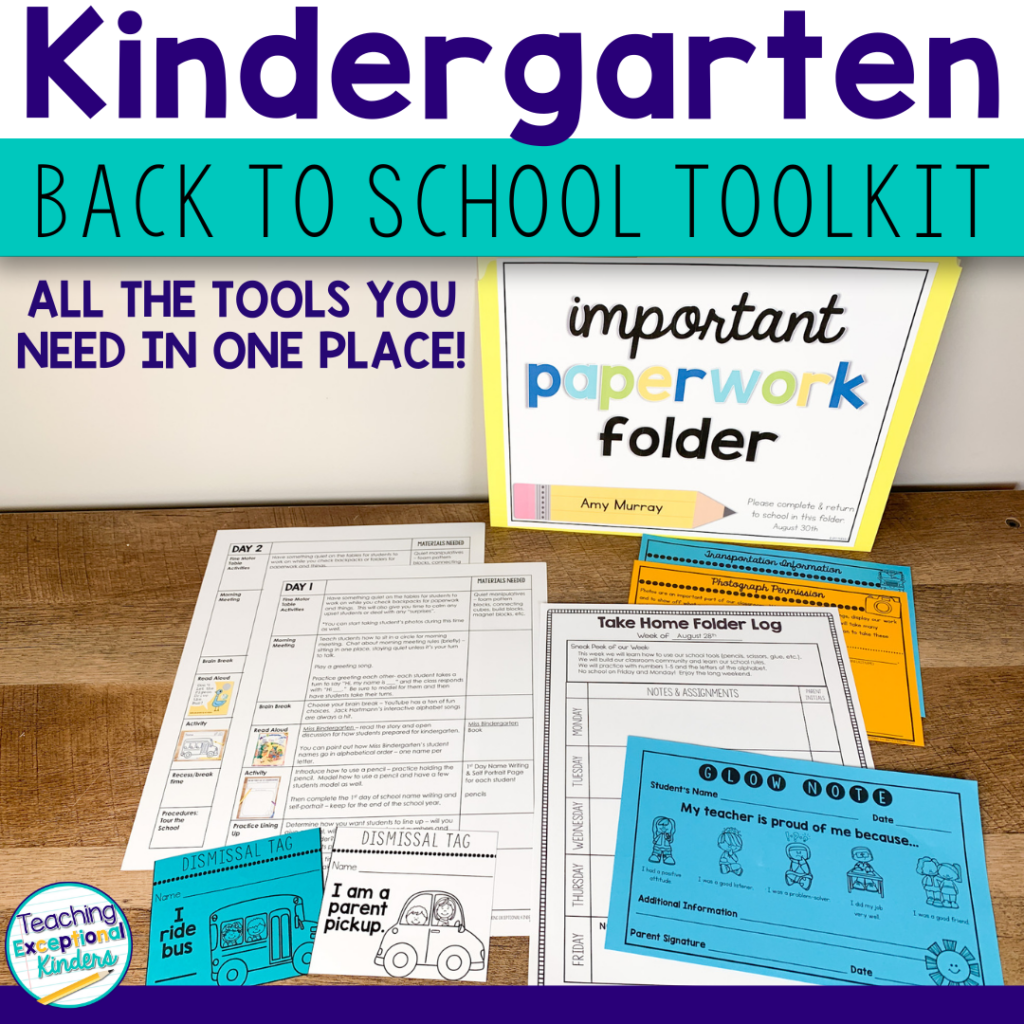
Save These Tips for Teaching in Kindergarten
If you’d like to find these tips later, be sure to save this post! Just add the pin below to your favorite teaching board on Pinterest. You’ll be able to quickly find these tips and resources when you’re planning your first year of teaching kindergarten!
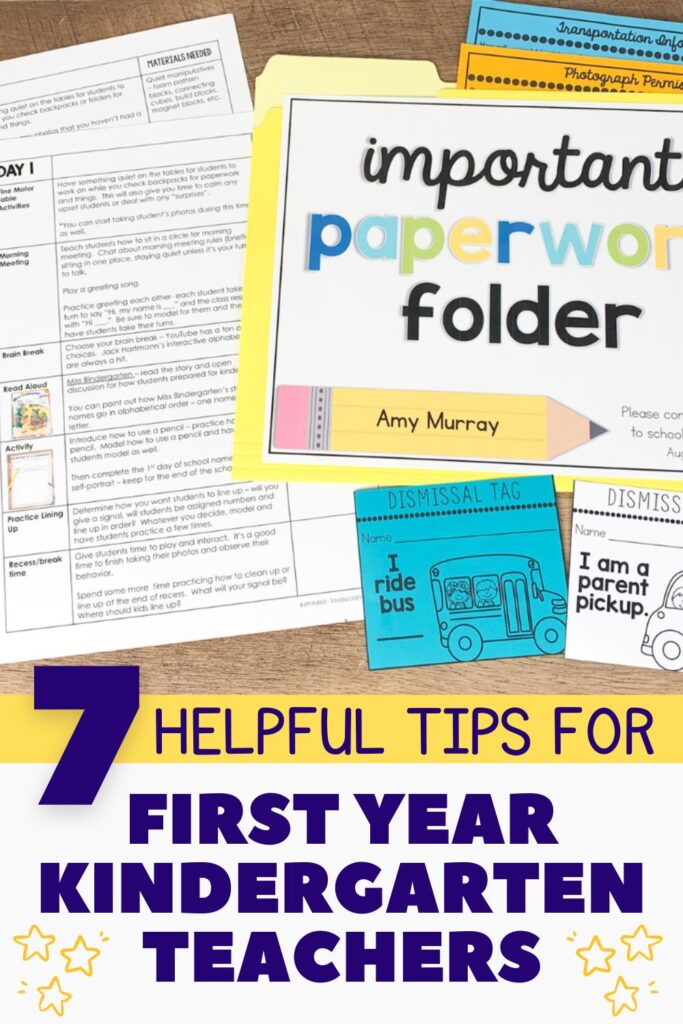
Amy
SITE DESIGN BY LAINE SUTHERLAND DESIGNS

